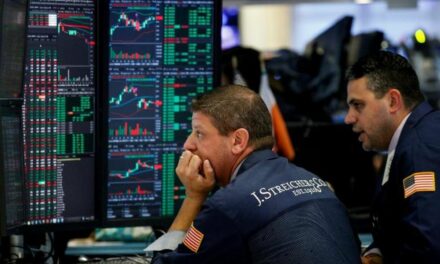After volatile trading on Tuesday, Dow and the S&P 500 closed slightly lower. Investors shifted their focus between the U.S.-China trade talks, the political ambiguity in Britain and President Trump’s threat to shut down the U.S. government. During the day, Wallstreet’s three key indexes wavered between the positive and negative territory before abruptly falling in the last hour of trading.
BBC reported that the Conservative lawmakers submitted enough letters to trigger a vote of no confidence in the guidance of British PM Theresa May, who fought to reach an agreement on the European Union Exit in the country.
Meanwhile, Trump called the discussion of a roadmap for trade talks between the US and Chinese officials “very productive,” which Wall Street saw strong advances from the news early in the day. However, two U.S. lawmakers proposed a bill stating to ban the trade of American products to Chinese companies who violate the export and sanction laws in the US.
The Wall and Trade Talks
Trump publicly fought with House Democratic Leader Nancy Pelosi and Senate Democratic Leader Chuck Schumer. Threats of a government shutdown over the funding of the wall in the Mexican border soured the mood in the morning.
A proprietary trader at Bright Trading LLC, Dennis Dick, said that the news on trade and politics is so headline driven that market constantly anticipates the next one. Adding that the traders don’t have any idea on what to do until the latest news release. The industrial average of the Dow Jones fell roughly 0.22 percent while the S&P 500, went down to 0.04 percent. Meanwhile, the Nasdaq Composite added 0.16 percent.
Out of the 11 major sectors of S&P, three of them ended in the red. Most of the remaining ones hung on to small gains. The defensive consumer, on the other hand, closed at 0.9 percent, the strongest gain of the day. The financial index had a 1 percent drop, making it the weakest.
Carol Schelif, Abbot Downing’s Deputy Chief Investment Officer in Minneapolis, said that the investors could take the lead in picking up the bargains of the volatility. Adding that the investors can’t control the headlines but instead rely on the underlying fundamentals that remains solid.
The S&P on Monday after an eight-month low bounced up to end higher and the tacticians said that the exchange algorithms kicked in to buy at the day’s lows. According to Bucky Hellwig, SVP at BB&T Wealth Management in Birmingham, Alabama, to fuel the Tuesday’s moves, the technical trading made its appearance.
With the advancing ones being outnumbered by the declining issues on the NYSE with a ratio of 1.17:1. Nasdaq favoring decliners with a 1.21:1 ratio. With a recorded 23 new highs, and 264 new lows for the Nasdaq Composite and the S&P 500 posted 15 new 52-week highs and 31 new lows. The 8.01 billion share from the US exchange volume similar for the last 20 days















